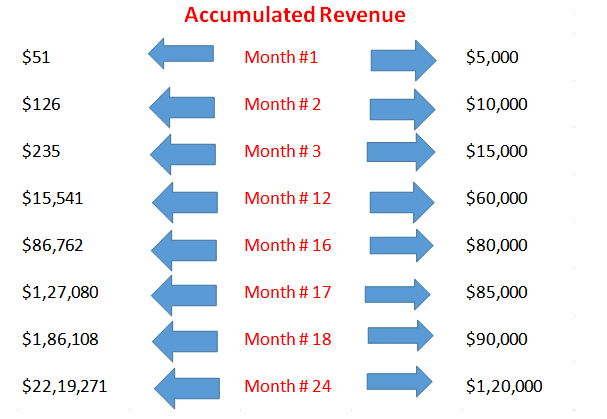What is executive coaching? Difference between executive coaching & leadership coaching? Why do companies hire executive coaches? Who is the best executive coach? Read the article to find out.
What is executive coaching?
Leaders have a high level of responsibility for the current success and future sustainability of any organization. Organizations invest in the development of such leaders. Traditionally, executive education, training programs, mentoring, challenging assignments, job shadowing, etc., are the tools used for leadership development in organizations.
Executive coaching is a recent entrant in the list of tools for leadership development in organizations. Executive coaching focuses on the leader’s personal development for him/her to be a more effective leader.
Executive coaching is a one on one relationship between a client (a leader) and a professionally qualified coach, that focuses on increasing the self-awareness of the client’s own thoughts, behaviors, and actions, and its impact on his/her effectiveness as a leader, and to change them for the leader to become a more effective leader.
The Center for Creative Leadership’s Handbook on Coaching defines the intent of coaching as to “help leaders understand themselves more fully so that they can draw on their strengths and use them more effectively and intentionally, improve identified development needs, and develop untested potential.”
Executive Coaching involves helping leaders gain clarity about their own motivations, aspirations, and commitment to change, so that they can lead more effectively.”
The ultimate outcome of executive coaching is to help the leader make a sustainable behavior change, leading to improved performance and better relationships at work.
The origin of the word coach
Kocs was a small town in Hungary. In the early 15th century, the town was known for making a light wooden enclosure on wheels pulled by horses and used for transportation.
Now, this light wooden enclosure was state-of-the art and much lighter and faster than anything available then. Hence it became popular and later spread all across Europe over the next century and was called kocsi. The Hungarian word “kocsi”, means “of Kocs” or from Kocs or made in Kocs.
The Spanish and Portuguese coach, the German Kutsche, and the Slovak koč and Czech kočár and the English word coach – all probably derive from the Hungarian word kocsi.
These coaches arrived in England around 1580. Later, in the 19th century, the term coach was used for U.S. railway carriages. In the 20th century, the term was used to describe horse-driven carriages and later motor coaches that eventually evolved into automobiles.
In its literal sense, the word coach is a vehicle that takes a person from where they are to somewhere they want to go. In the present day, the word coach keeps the same analogy. A coach helps an individual take him from where he currently is to where he wants to go.
Not in the sense of going from one place to another, but in the sense of going from their current situation (career, physical, financial, emotional, etc.) to where they want to go – the desired goal – to be in a better shape, improve their performance, improve their finances, relate better with people, etc.
A brief history of modern coaching
The sports coach
When the word coach is used for a layperson, they usually think of a professional sports coach. Coaching, for the most of the 20th century, was associated with sports. Whether it is an individual sport like tennis or a team sport like football, it is customary to have a coach in any professional sport.
The player herself may be talented, but to compete and win at higher levels, she will utilize a professional coach’s services. There is no stigma attached to having a coach; rather, working with a renowned coach is highly desired by any athlete.
But it wasn’t always like that. In the earlier part of the 20th century, they considered the concept of hiring a professional coach to improve the performance of an athlete to be dishonorable and disgraceful. An athlete should have “natural” talent and should not need any external help.
Today, no individual athlete or a team would even think of participating in any sport at a competitive level without a coach’s help. A good coach helps the individual athlete or a team perform at their best.
Executive coaching in organizations
A similar evolution happened with professional coaching in the business environment also. Coaching in the current form started in the late 80s and early 90s. Before that, mentoring and hiring external consultants was prevalent but wasn’t termed as coaching and had a different purpose.
There was also a stigma attached to admitting that an individual needed the help of a “consultant” to help the leader overcome some form of “weakness.”
In the early years of executive coaching, hiring a coach for the executive in an organization was considered to be something that the executive was usually not proud to share with others. The perception was that if they assigned an executive a coach – he needed to be “fixed” or “remedied.”
Over the last decade or so, executive coaching has gained immense popularity. A majority of Fortune 500 companies use executive coaching as part of their leadership development initiatives.
As executive coaching has gained popularity, the availability of executive coaches has also increased significantly. Today, senior leaders consider executive coaching a badge of honor. It conveys to the leader and the others that the company considers them worthwhile to invest in their development via coaching.
Why is executive coaching so popular?
From the second world war until the Berlin wall’s falling in 1989 – businesses were predominantly industrial and manufacturing in nature. The business operation was predictable, and the pace of change was quite “reasonable” to manage. Over the last three decades, there have been many political, economic, social, and technological changes. They have impacted the way business is done.
Here are some of the significant factors contributing to these changes in the business environment.
Globalization
Advances in technology, communication, internet, and supply chain efficiency meant that a large company could produce the goods anywhere globally, where it is the most cost-effective, and sell them anywhere in the world, where it is the most profitable. It also meant that your competitor maybe anyone around the world who can produce and deliver the goods or services cheaper, faster, or better than your company. Businesses became global, and so did the competition.
Leaner and flatter organizational structure
Organizations are leaner and flatter. Less number of employees means more demand for existing employees. Flatter and less hierarchical organizations mean more independent teams that are more responsive to the changes.
The fast pace of change is getting faster.
Before the 1980s, the businesses had long periods of stability followed by intermittent change and then another stable period. Today, with the aid of technology, change, innovation, and disruption have become a norm. Transition is a continuous process. The pace of change is fast and getting faster.
Knowledgeable and demanding customers
With the availability of any information over the internet, consumers have become knowledgeable, savvy, and demanding. This puts an additional burden on businesses to deliver value to customers.
Multi-generational multi-cultural and multinational workforce
After the fall of the Berlin wall, businesses have had the opportunity to expand globally in areas that were not accessible due to regulations. They have also had to hire a workforce that was multinational, multi-cultural, and multi-generational. Engaging and managing such a diverse workforce needed a new set of skills on the parts of leaders.
High demand, competition, and turnover of talented employees
As businesses have expanded over the globe, there is an increased demand for talented employees. In the 50’s and ’60s, there was lifetime employment for any employee and probably with the same company. Today, no one expects lifetime employment, neither the company nor the employee. Employees are mobile geographically, across industries, and across companies. As a result, talented employees are in high demand. Businesses have to work hard to attract and retain talented employees.
Increased pressure on executives to deliver results
All of these factors have a significant impact on businesses. They have also placed an enormous amount of stress on the leaders expected to navigate this complex environment and deliver value to stakeholders in terms of revenue, profits, and customer satisfaction.

A new business environment needed a new approach.
The world, and consequently businesses, have become more complex, global, and subject to continuous change. Although the term VUCA (volatile, uncertain, complex, and ambiguous) was originally used by the United States military to describe the extreme conditions in Iraq and Afghanistan, VUCA accurately describes the present day’s business environment. VUCA world has also forced the change in leadership style from autocratic and to more of a catalyst, facilitator, and coach. In fact, the coaching style of leadership is both highly desired and highly effective to lead in a VUCA world.
The advent and the rise in popularity of coaching coincide with the rapid change in the business environment since the late ’80s. As the business environment has changed since the late ’80s, executive coaching has also evolved in lockstep.
Organizations are recognizing the importance of executive coaching to support and develop senior executives to survive and thrive in the VUCA world of business today. That is the reason for the explosive growth and high popularity of executive coaching in organizations.
What is the difference between executive coaching and leadership coaching?
The word executive generally refers to someone in a senior position in an organization – usually at the C-suite level – CEOs and board of directors, etc. Executive coaches were hired for these senior leaders to support them and help them be more effective in the dynamic business environment. However, as coaching has become popular, and its benefits became clear, executive coaching was cascaded down to multiple organizations. Today, executive coaching is an essential part of leadership development for leaders at all levels – from C-suite all the way down to first-line managers. Today, executive coaching is a part of the competency framework, talent management, and learning and development functions in most large organizations.
The desired outcome of coaching has also evolved over the years. Initially, in the 1980s, coaching was often internally used to derail behaviors or advice in specific areas. Often the coach was internal – a person from Human Resource who would engage in the coaching. Sometimes, an external professional was hired to advise and perspective for a specific domain knowledge like finance, business development, legal, etc.
The perception then was that if a leader was being coached, he needed to be “fixed” or “remedied.” An executive would rarely declare in public that he was being coached. It was a sign of “weakness.” It meant that the leader was not capable of leading on his own and needed help!
Read: How to find the best executive coach for you or for the leaders in your organization.

The changing perception and reach of executive/leadership coaching
Since then, we have come a full circle around. Today, a majority of coaching is used for the development of high potentials and high performers.
Executive coaching has gone from stigma to a badge of honor. If the organization does not include a leader in a coaching program, often the perception that the organization does not consider the leader a high potential or worthwhile to invest in a coaching program for that leader. Often, executives may leave the organization if they believe that they are not investing enough in their continuous development.
Executive coaching has also spread geographically around the world. Initially, most coaching engagements were in the United States and Western Europe. Now executive coaching has spread to Asia, especially India, Africa, the Middle East, Eastern Europe, and South America. In fact, a majority of growth in executive coaching is being contributed by these countries and regions.
Why do companies and leaders hire an executive coach?
In a study conducted by Diane E. Lewis, companies identified various reasons for hiring executive coaches. Here is the list of the top five reasons, with the percentage of respondents citing that particular reason in parentheses.
- To develop the leadership skills of high-potential individuals (86%).
- To improve the odds that newly promoted managers would be successful (64%).
- To develop management and leadership skills among their technical people (59%).
- To correct behavioral problems at the management level (70%).
- To help leaders resolve interpersonal conflicts among employees (59%).
According to an executive coach and author Anne Marie Valerio, a typical coaching engagement helps the executive with one of the following three areas. Almost every situation that leads to hiring an executive coach can be classified into one of these categories.
Skill development
Typically, skill development areas are either interpersonal or self-management skills. For example, better communication with team members, ability to influence or present in front of board or investors, or better manage your own time and priorities. Leadership is managing other people and getting results through others. When you are dealing with people, behaviors matter a lot. Once termed as soft skills, they now have become power skills for any executive.
Emotional intelligence – which includes competencies of self-awareness, self-regulation, social awareness, and relationship management – accounts for three-fourths or more of the difference between a high-performing executive compared with an executive whose performance is in the bottom 10th percentile. An executive coach helps the leader become aware of the gap between his intention and impact on the team members.
Improve current performance
Enhance performance by leveraging strengths and working on improvement areas. Performance may be hindered by the leader’s behaviors which may be problematic for team members. According to leadership guru Marshall Goldsmith, executives and leaders are successful because of certain behaviors and despite other behaviors! A technically brilliant leader may be abrasive or have other behavioral patterns that may offend other team members. Working on improving such behaviors increases the effectiveness of the executive and helps improve performance.
Often executives have to take up new roles and new challenges either up the hierarchy or across to another division. This usually happens in response to an urgent business need, and the leader has no time to prepare for the transition. It often is the sink or swims approach. Unfortunately, a large number of executives are unsuccessful when transitioning up or across an organization. An executive coach helps the leader transition into the new role and help him perform, increasing its value.
Develop future competencies
The pace of change today is fast and getting faster. Organizations have to focus on current profits as well as future sustainability. The pace of change today in the business world is fast and getting faster. Artificial intelligence, robotics, analytics, technology are accelerating the pace of change at an unprecedented rate. This requires the executive or the leader to keep up. And keeping up means developing newer competencies needed to succeed in the future.
Rapid changes in political, economic, social, and technology have made it imperative for leaders to develop the future competencies. Some examples of emerging competencies are technologically savvy and can engage a diverse workforce.
Leaders also have to look across the horizon to anticipate opportunities and threats and guide them to seize opportunities and eliminate or be prepared for the threats. An executive coaching engagement allows the leader to take a more strategic view and develop future skills.
Read: Team coaching – Everything you wanted to know about it.
Who is the best executive coach?
Dr. Marshall Goldsmith is considered the best executive coach in the world. Here is what some of the most respected publications think of Dr. Marshall Goldsmith.
Thinkers 50 – World’s most influential leadership thinker (2015 and 2011), top ten business thinker, top-rated executive coach (2015, 2013, and 2011).
Forbes – One of five most-respected executive coaches.
Wall Street Journal – Top ten executive educators.
American Management Association (AMA) – Fifty great leaders who have impacted the management field over the past eighty years.
INC Magazine – America’s #1 executive coach.
The Times (UK) – 15 Greatest Business Thinkers in the World.
Executive coaching for your leaders using Dr. Marshall Goldsmith’s stakeholder centered coaching.
We help you develop leaders in your organization using the stakeholder centered executive coaching pioneered by Dr. Marshall Goldsmith – the world’s number one leadership thinker and executive coach to the CEOs of the Fortune 500 companies.
You get the exact same executive coaching for your leaders, which Dr. Marshall Goldsmith has used for his Fortune 500 CEO clients. In fact, we guarantee that the leader will improve measurably, or you don’t have to pay.
We help leaders to develop skills, help their performance, and help them develop future competencies. We offer guaranteed and measurable leadership development coaching along with emotional intelligence assessment to develop specific competencies.
NAL Triple Advantage Leadership Coaching
That delivers guaranteed and measurable leadership growth. It is based on a stakeholder-centered coaching process with a 95% effectiveness rate (in a study of 11000 leaders on 4 continents). It is used by companies ranging from startups to 150 of the Fortune 500 companies to develop their leaders.
Here are some of the salient benefits of NAL Triple Advantage Leadership Coaching
Time and resource-efficient: The leader does not have to leave work to attend training programs. We go to the leader and her team. And it only takes 1.5 hours per month. The rest of the time, the leader is working to implement with her team.
Separate and customized improvement areas for each leader: Every leader is different. One size fits all approach doesn’t work. Individual development areas for each leader aligned to the business strategy.
Involves entire team: Unlike most leadership programs, NAL Triple Advantage Leadership Coaching involves the leader’s entire team, and it has a cascading effect – increasing the team effectiveness and improving organizational culture.
The leader becomes the coach: for continuous improvement for leaders themselves and their teams. It is like kaizen for your leadership development.
Cost-Effective: Our entire one-year coaching engagement often costs less than sending the leader to a short duration leadership program at any reputed B school.
Guaranteed and measurable leadership growth: as assessed – not by us – but anonymously rated by the leader’s own team members.
Pay us only after we deliver results!: We work with many of our clients on a pay for results basis. What does it mean? If the leaders don’t improve, you simply don’t have to pay us.
Schedule an exploratory 15-minute conversation with our leadership adviser today
Click the button below.
SCHEDULE NOW!













